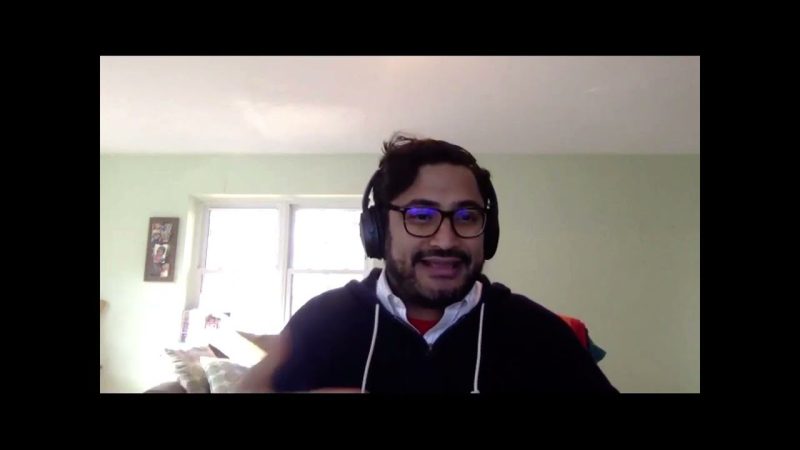Four Takeaways for Designing Meaningful Assessments in Hybrid and Online Learning
How can we adapt our assessment practices to show and support student learning in hybrid and online settings? What are some of the shifts in both mindset and practice that teachers have to make?
The COVID-19 pandemic has created a number of challenges for schools when it comes to teaching and learning. As educators have made shifts in their teaching practice, some major questions are emerging as to how we actually capture evidence of student learning.
Educational research and theory is scant when it comes to identifying best practices for assessing remotely during a pandemic. So, GOA decided to leverage its network of educators to crowdsource strategies and tips for assessing students through an Ask Me Anything! Live Event: Moving Beyond “Cheat-Proof”: Meaningful Assessment Practices in Hybrid and Online Spaces.
With panelists Varghese Alexander (Math Teacher, Asheville School), Kelola McCrary (World Language Department Chair and Spanish Teacher, Oregon Episcopal School), Akua Peprah (Elementary Math/Science Teacher, The Lovett School), and Tim Rollwagen (Science Teacher, Lakefield College School) and 300+ attendees from around the world, the live event featured a cross-disciplinary conversation that explored strategies, tips, and tools for assessing student learning. Panelists unpacked participant-generated questions during the live session, and attendees were afforded an opportunity to connect with each other and ask questions in real-time.
You can view the full recording of the AMA here. What follows is a list of key takeaways and themes that emerged from the conversation.
Moving Beyond ‘Cheat-Proof’ — January 13, 2021 Ask Me Anything
4 Takeaways for Designing Meaningful Assessments
1. Reframe the conversation from looking for cheaters to looking for learning.
A question that is top of mind for many educators is how to prevent cheating on online and hybrid assessments. Some schools have invested in exam proctoring software or adopted policies that direct students to position their device cameras in a certain way. However, there has been some unease with employing these measures because of the potential to infringe on student privacy and to exacerbate inequities, not to mention that students with access to multiple devices can bypass the proctoring software. There’s concern that these approaches are placing more of an emphasis on compliance and monitoring rather than learning, not to mention being fundamentally more trouble than they’re worth.
Other schools are reexamining the basic premise of cheating in the context of online and hybrid learning. Instead of directing their energies towards designing “cheat-proof” assessments, educators are leaning into open-book assessments that require students to use and apply the information they have access to. Drawing upon the idea that life is an open-book experience that asks people to leverage resources and tools at their disposal, educators are designing assessments that make use of the concept of the “extended mind.”
Some criticism has emerged that open-book assessments are limited in having students practice the valuable skills of recall and retention. However, as Annie Murphy Paul suggests, some of the skills of retrieval practice can be exercised in low-stakes situations, such as in entrance or exit tickets during synchronous calls, rather than being the focus of a high-stakes summative learning experience.
2. Formative is the new summative.
While some schools are approaching the question of meaningful assessments by tinkering with logistics and constraints, others are exploring a wholesale re-prioritization of certain assessment practices. During the AMA, the panelists explored transitioning to more frequent, formative assessments, such as conferences and quick synchronous oral practice, as a way to capture evidence of student learning.
In many ways, frequent formative assessments are liberating for both teachers and students because they’re more manageable and more cheat-resistant than traditional tests. These assessments leverage individual student choice and voice, measure higher order thinking, and feature deep metacognitive reflection on the process of learning. Therefore, the focus shifts from monitoring student compliance to supporting student learning and exploration.
3. There are no easy answers for the AP/IB.
The question of meaningful assessment gets compounded for educators who feel the pressure to adequately prepare students for external exams like Advanced Placement (AP) or International Baccaluareate (IB). The panelists mused that in the longer run, the lessons from the pandemic might drive these exams towards authentic assessments that require students to transfer, or apply, their understanding or knowledge to novel contexts. In the shorter run, AP and IB teachers might have to grant themselves some grace this year as they deal with an unprecedented, highly fluid situation in schools. This might mean having some frank conversations with school leadership and families on revised expectations for these exams.
Recently, the College Board unveiled its AP Pacing Guides as a way to help teachers contend with the challenges of teaching during online and hybrid learning. These guides provide recommended asynchronous student assignments along with checks for understanding and options for synchronous instructional focus.
Additionally, educators in GOA’s network are reworking how they design formative and summative assessments in AP and IB courses. Some have begun relegating some of the objective pieces (ex. multiple choice questions) to low-stakes formative assessments while using the essays and open-ended responses for summative assessments. Educators are using this approach in conjunction with oral practice and look for consistency across these assessments as a way to determine where a student is in their learning.
4. Create an equitable playing field for students at home and in person.
Teachers have reported feeling that they’re attention is divided during hybrid learning and that they’re struggling to do justice to both in-person and at-home students. This is where assessment can come in as a form of participation and engagement.
The key to ensuring that assessments are fair to students at home and in person is by designing for the constituents that will most likely be disadvantaged in an assessment scenario. Often, that means designing for online first (ex. Asking all students to take a quiz online, even if most are in-person and a few are online).
Teachers can also lean on robust metacognitive reflection to capture student learning. This kind of assessment isn’t bound by the logistical constraints of time and place the way other types of assessment might be. Given the highly individualized and personalized nature of metacognitive reflection, it provides a way for students to process their learning by identifying what they’ve learned and articulating how they know.
There’s no doubt that teachers have done some incredible work around assessment since early 2020, when the pandemic first hit. There has been innovation and up-skilling, but with that comes fatigue compounded by the exhaustion of living during trying times. For many teachers, the longer term question is how do to create not only meaningful, but also manageable assessment structures.
Are you interested in learning more about assessment design? Read these GOA articles:
- Three Quick Wins for Engaging Learners in Online and Hybrid Learning
- Competency-Based Learning: A Long-Term Teaching Strategy for Online and Hybrid Learning
- Four Skills that Matter for Deeper Learning, According to Students
In addition, GOA has just announced its new slate of facilitated workshops and educator courses for 2021, including its Quick Wins 2: Assessment Design course! Register today.

